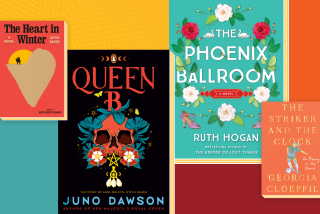South America from the folks who know it best
South American Handbook 2003, Ben Box, Footprint Handbooks Ltd., $39.95
Look in the corner of this guidebook’s cover and you’ll see a rare thing: “79th Edition.” And behind that number lies a tale.
Before Tony and Maureen Wheeler conceived the Lonely Planet guidebooks, before Harvard students cranked up their Let’s Go franchise, before Arthur Frommer started scribbling for the benefit of American skinflints in Europe, the “South American Handbook” was a part of the traveler’s landscape. It was known for such brisk, unvarnished intelligence as: “Carnival in Cusco [Peru] is a messy affair with flour, water, cacti, bad fruit and animal manure thrown about in the streets.” (It’s on page 1,233 in the new edition.)
This book’s English publishers have been issuing new editions since 1924. And for nearly that long, old South America hands have been recommending them to newcomers contemplating travel to that continent.
In its current form, the book features some traits every guidebook should copy. For instance, a strong binding and extraordinarily thin paper make this edition’s 1,564 pages a tad slimmer than my 952-page paperback dictionary. But it does have one trait that I wish all guidebook publishers would forswear: paid ads, sprinkled liberally.
Footprint, the book’s publisher, now has 80 other guidebooks. I’ve not tested any but its old standby, in which I found comforting results.
The Explora Lodge in Chile’s Torres del Paine National Park is, indeed, an “ugly building but luxurious and comfortable.” The climb up Huayna Picchu, the peak that overlooks Machu Picchu in Peru, is in fact narrow, perilous in wet weather and a bad idea for anyone with acrophobia. Physical descriptions of half a dozen lodgings, from Gringo Bill’s in Aguascalientes, Peru, to the Inca Utama Hotel on the Bolivian side of Lake Titicaca, match my memories.
The whole book teems with helpful details, especially in its unflinching descriptions of budget lodgings. Here’s a measure of its backpacker-friendliness: In a quick categorization of lodgings, the guide takes care to distinguish among the $12-to-$20 places, the $7-to-$11 places, the $4-to-$6 places and (shiver) the $3-and-under places.
The only error I could find was in the background entries, which say both Uruguay and Paraguay measure precisely 406,752 square kilometers. (Other sources put Uruguay at 176,000.)
Though scores of collaborators and correspondents contribute to each edition, much credit must go to author Box, who claims a doctorate in Spanish and Portuguese studies from London University, started as an underling on the guidebook in 1980 and rose to become its top editor in 1989.
It is a shame about the ads, though. With their knowing asides about the going rate of home-brewed maize liquor, Box and company win a traveler’s trust easily enough. But when you read their editorial endorsement of the Hotel Oberland in La Paz and then you notice the advertisement for the same hotel just 2 inches below, you have to sigh.
*
Perfect pictures but purple prose on Hispanic America
America Latina, Text by Fabienne Rousso-Lenoir, Assouline Publishing Inc., $50
THIS is a coffee-table book with poker-faced Frida Kahlo on its cover and a hemisphere of frustrating possibilities inside. It takes as its subject every Spanish- and Portuguese-speaking country in the Americas. To evoke them, the editors use a brilliant range of current color and black-and-white photos, along with historic documents, paintings and other choice images.
The words are less exhilarating. Arranged in nine thematic sections, the book features essays on topics from the bossa nova to Che Guevara. But Rousso-Lenoir’s language is so high-flown that the reader -- well, this reader -- soon grows cranky. For example: “It was the goldsmith who discovered these dreams of the sun first in the dark rock in which he managed to distinguish the shiny metal.”
Pictures nearly perfect, prose too purple.
*
An area code’s worth of pictures
212 Views of Central Park: Experiencing New York’s Jewel From Every Angle, Photographs by Mick Hales, text by Sandee Brawarsky Stewart, Tabori & Chang, $35
Inside these covers you’ll find a Big Apple valentine, thoroughly illustrated and filled with data-rich captions and sunny accounts of park history. The idea of 212 images is simply an area code-driven gimmick (so next we can count on a 909-shot salute to Riverside, right?), and ever-proliferating area codes have already begun to make it obsolete. But to celebrate some of the best-loved acreage in North America, how much excuse do you need?
*
Calendar writer Christopher Reynolds’ book column appears twice a month.
More to Read
Sign up for The Wild
We’ll help you find the best places to hike, bike and run, as well as the perfect silent spots for meditation and yoga.
You may occasionally receive promotional content from the Los Angeles Times.







